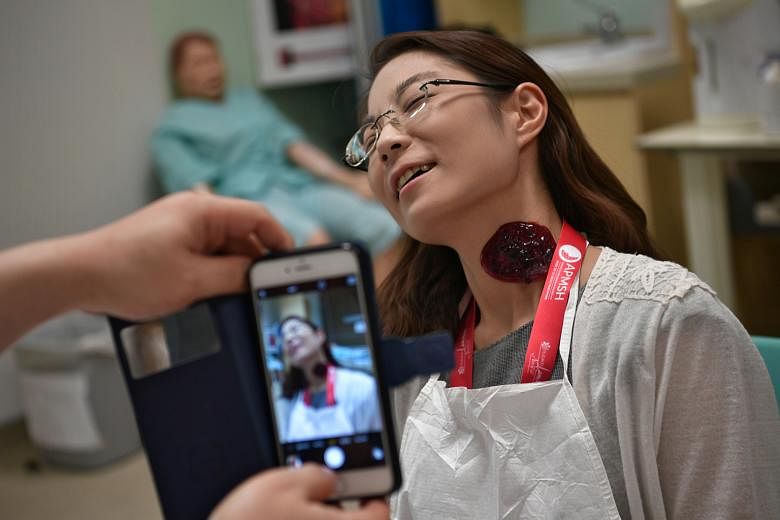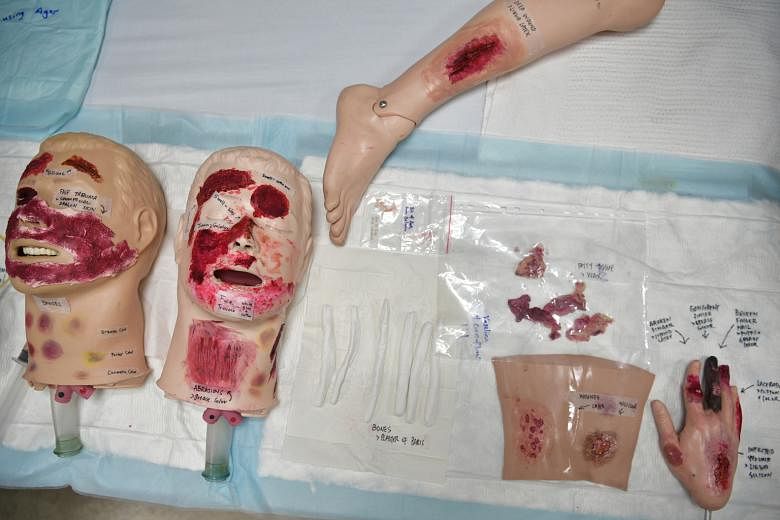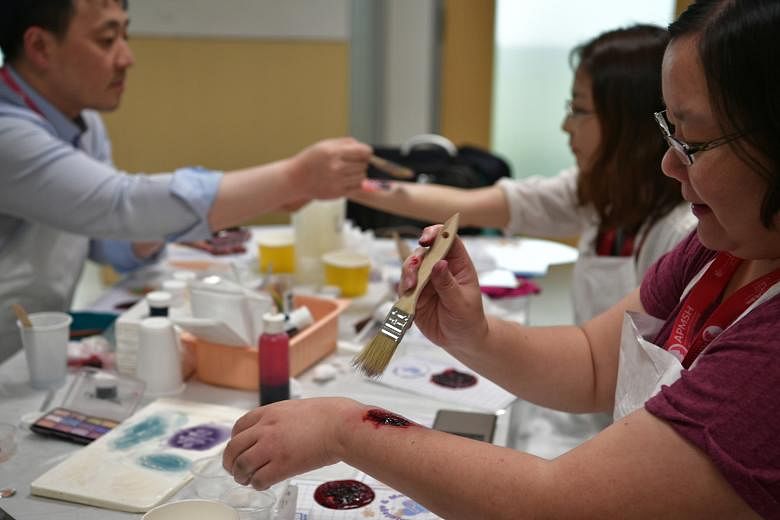With oatmeal, food colouring and a splash of fish sauce, Madam Carol Goh can create a puddle of vomit realistic enough to make any young doctor gag.
Using Hollywood-style make-up, the simulation technologist at the National University of Singapore (NUS) can also mimic rashes, oozing wounds, and broken bones.
A shortage of cadavers and real patients has meant that the university is turning to these creative ways of training its medical and nursing students.
As well as turning to experts like Madam Goh who specialise in the art of creating mock injuries, the NUS Centre for Healthcare Simulation is itself equipped with sophisticated mannequins that sob, shudder and wail.
It is also planning to invest in virtual reality headgear sometime next year, which will be used to teach topics such as anatomy and dissection.
"One of the reasons is that (students) don't get enough hands-on experience with real cadavers because of the shortage," said the centre's director, Associate Professor Suresh Pillai.
"Virtual reality also means we don't have to physically create the scenario - for example, in the case of a mass-casualty situation."
Earlier this month, the centre hosted the Asia-Pacific Meeting on Simulation in Healthcare, which drew experts from around the world.
Simulation currently forms about 12 per cent of the curriculum for undergraduates at the NUS Yong Loo Lin School of Medicine, which admits 300 students every year.
But Prof Suresh is working to increase the amount of time students spend in his centre, where they pick up important practical skills.
"Very often, we record performances and replay them to students," he said.
"It is a very powerful tool for them to realise where they stand, and how not to make (the same) mistakes in real life."
The centre also employs actors - known as "simulated patients" - who are taught to simulate unusual situations that students may not encounter, even during their real-life attachments to hospitals.
"They could be angry, upset, suicidal, psy- chotic," Prof Suresh said, adding that the students are taught how to handle such patients.
Madam Goh is a nurse by training, which means that she knows exactly how the wounds she is meant to create are supposed to look like.
She started learning how to simulate these injuries three years ago, and can now put together from scratch a scenario where young doctors have to operate to remove a cyst - complete with fake blood oozing out once the first cut is made.
"We use very low-cost, recycled items, and we do everything from A to Z," she said.




